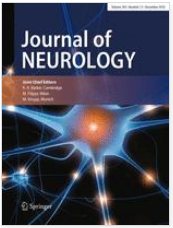 The objective here was to study scapular winging or other forms of scapular dyskinesis (condition of alteration of the normal position and motion of the scapula) in myotonic dystrophy type 1 (DM1), which is generally considered to be a distal myopathy, we performed an observational cohort study.
The objective here was to study scapular winging or other forms of scapular dyskinesis (condition of alteration of the normal position and motion of the scapula) in myotonic dystrophy type 1 (DM1), which is generally considered to be a distal myopathy, we performed an observational cohort study.
A team of researchers from The Netherlands and France (Institute of Myology) performed a prospective cohort study on the clinical features and progression over time of 33 patients with DM1 and pronounced, mostly asymmetric scapular winging or other forms of scapular dyskinesis. They also explored if scapular dyskinesis in DM1 has the same genetic background as in facioscapulohumeral muscular dystrophy type 1 (FSHD1).
The cohort included patients with congenital (n = 3), infantile (n = 6) and adult-onset DM1 (n = 24). Scapular girdle examination showed moderate shoulder girdle weakness (mean MRC 3) and atrophy of trapezius, infraspinatus, and rhomboid major, seemingly similar as in FSHD1. Shoulder abduction and forward flexion were limited (50-70°). In five patients, scapular dyskinesis was the initial disease symptom; in the others it appeared 1-24 years after disease onset. Follow-up data were available in 29 patients (mean 8 years) and showed mild to severe increase of scapular dyskinesis over time. In only three patients, DM1 coexisted with a FSHD mutation. In all other patients, FSHD was genetically excluded. DM2 was genetically excluded in nine patients. The clinical features of the patients with both DM1 and FSHD1 mutations were similar to those with DM1 only.
Scapular dyskinesis can be considered to be part of DM1 in a small proportion of patients. In spite of the clinical overlap, FSHD can explain scapular dyskinesis only in a small minority. This study is expected to improve the recognition of shoulder girdle involvement in DM1, which will contribute to the management of these patients.
